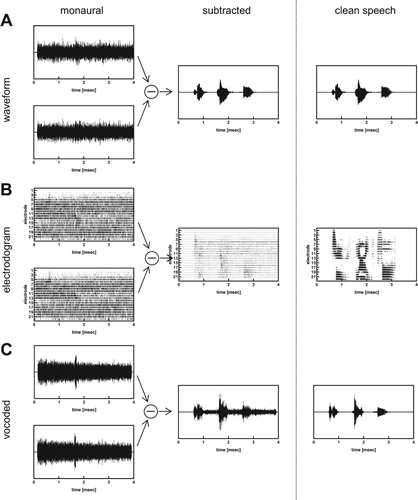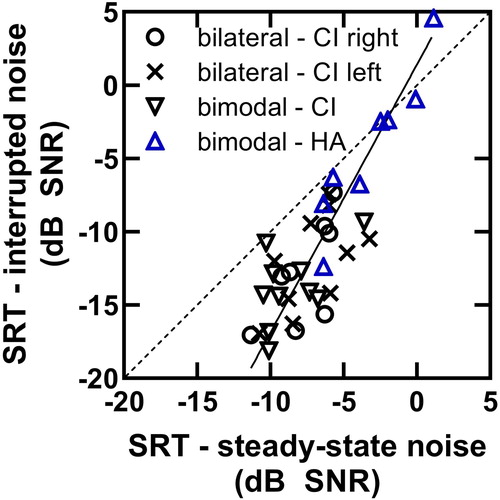Figures & data
Table 1 Demographic characteristics of bilateral and bimodal CI patients
Figure 1 Pure-tone thresholds for the HA ear of the 10 bimodal participants. The thick line represents the mean pure-tone thresholds

Figure 2 Speech recognition in noise for 10 bilateral (left panel) and 10 bimodal (right panel) CI users. The SRT was measured in four different conditions (different symbols) and with two different masking noises. The SRTs measured with steady-state noise are represented by the black symbols, the SRTs measured with interrupted noise are represented by the green symbols. The symbols represent individual scores and the horizontal lines represent mean and ± 1 standard deviation

Table 2 Mean SRT for the DIN tests (mean SRT for complete cases in brackets) measured in different conditions and with different masking noises
Figure 3 (A) From left to right: monaural acoustic waveforms of standard and phase-inverted digit-triplet (2-9-4) in steady-state noise at an SNR of −10 dB, the difference between both monaural waveforms (subtracted), and the waveform of the clean speech signal. (B) Electrodograms of the monaural acoustic waveforms, the difference between both electrodograms representing interaural speech cues, and the electrodogram of the clean speech signal. (C) Monaural acoustic waveforms of the vocoded electrodograms, the difference between the waveforms, and the waveform of the clean speech signal

Figure 4 SRT in interrupted noise versus SRT in steady-state noise for the monaural conditions in bilateral and bimodal CI users. Black symbols represent data from measurements with a CI and blue symbols represent data from measurements with a HA. The diagonal dashed line represents equal performance, with the distance between points below the dashed line and the diagonal representing the fluctuating masker benefit. The solid line shows a fitted linear function suggesting a decrease in fluctuating masker benefit with an increase in SRT in steady-state noise

